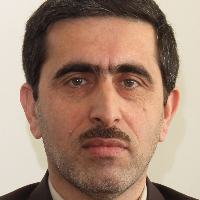Comparing Brain/Behavioral Systems, Sensory Processing Styles, and Resiliency between Cardiovascular Patients and Normal People
Nowadays, cardiovascular diseases are known as the leading cause of death in the world. In these diseases, emotional and psychosocial problems contribute to the incidence and exacerbation of physical disorders. Considering the increasing prevalence of cardiovascular diseases worldwide and the decreasing age of the disease onset in Iran, it is important to investigate the role of and assess the effect of brain/behavioral systems variables, sensory processing styles, and resilience as factors involved in anxiety and increasing the incidence of cardiovascular diseases. This research can help clarify the effects of these factors on cardiovascular diseases, which is vital in the direction of future psychological research. This study compared brain/behavioral systems, sensory processing styles, and resilience between cardiovascular patients and normal individuals.
The study method was causal–comparative. For the patient group, the statistical population included all cardiac patients referred to hospitals in Tehran City, Iran, for medical examinations during 2018. For the normal group, the statistical population consisted of normal people accompanying patients in the same hospitals and diagnostic centers. Because of the large population of Tehran, we only selected one hospital from each of the eastern, western, northern, and southern areas of Tehran. The study sample consisted of 100 people (50 patients and 50 normal people). They were selected by the available sampling method based on the inclusion and exclusion criteria. The inclusion criteria were as follows: having at least a high school diploma, being between 25 and 55 years old, and providing informed consent to participate in research. The exclusion criteria were the presence of mental disorders requiring immediate treatment, such as psychosis (according to the patients' medical records) and the existence of drug dependence. The study instruments were the Connor–Davidson Resilience Scale (Connor & Davidson, 2003), Gary–Wilson Personality Questionnaire (Wilson et al., 1989), and Scale of a Person with High Sensory Processing Sensitivity (Aron & Aron, 1997). Descriptive statistics were performed by calculating central and dispersion indicators such as mean and standard deviation, and inferential statistics by conducting the independent t–test at a significance level of 0.05. All statistical analyzes were performed in SPSS software version 22.
Findings showed significant differences between the cardiovascular patients and the normal individuals in the variables of behavioral inhibition system (p<0.001), passive avoidance (p<0.001), extinction (p=0.007), behavioral activation system (p<0.001), active avoidance (p<0.001), confrontation (p=0.006), fight/flight (p<0.001), fight (p<0.001) and flight (p=0.003). Also, there were significant differences between the cardiovascular patients and normal individuals in the components of ease of stimulation (p<0.001), low sensory threshold (p=0.032), aesthetic sensitivity (p<0.001), the threshold of sensory stimulation (p<0.001), and the total score of sensory processing systems (p<0.001). Finally, there were significant differences between the two groups in the components of trust in individual instincts and negative effect tolerance (p<0.001), positive acceptance of change and safe relationships (p<0.001), control (p=0.004), spiritual effects (p<0.001), and total resilience score (p<0.001). However, there was no significant difference between the two groups in the component of perception of individual competence (p=0.076).
Based on our findings, resilience, the sensitivity of sensory processing, and brain–behavioral systems, including behavioral inhibition system, behavioral activation system, and fight/flight behaviors, have significant relationships with cardiovascular disease and can be appropriate components in the analysis of psychological reasons of cardiovascular problems.
- حق عضویت دریافتی صرف حمایت از نشریات عضو و نگهداری، تکمیل و توسعه مگیران میشود.
- پرداخت حق اشتراک و دانلود مقالات اجازه بازنشر آن در سایر رسانههای چاپی و دیجیتال را به کاربر نمیدهد.


